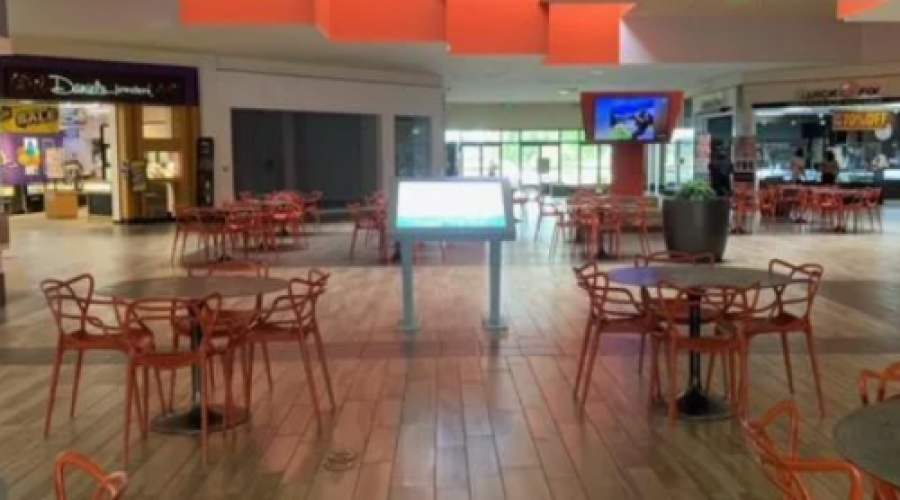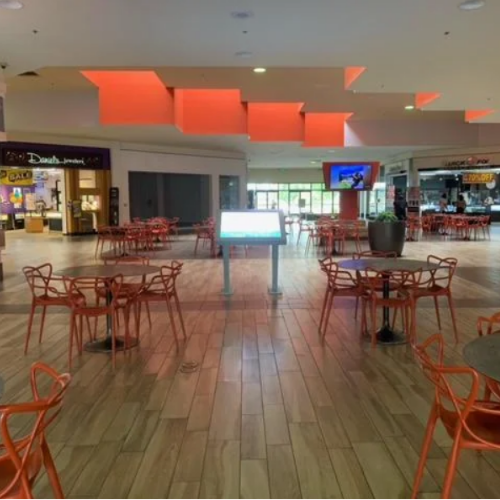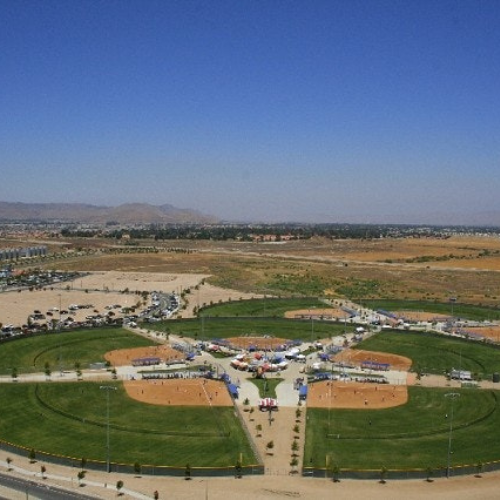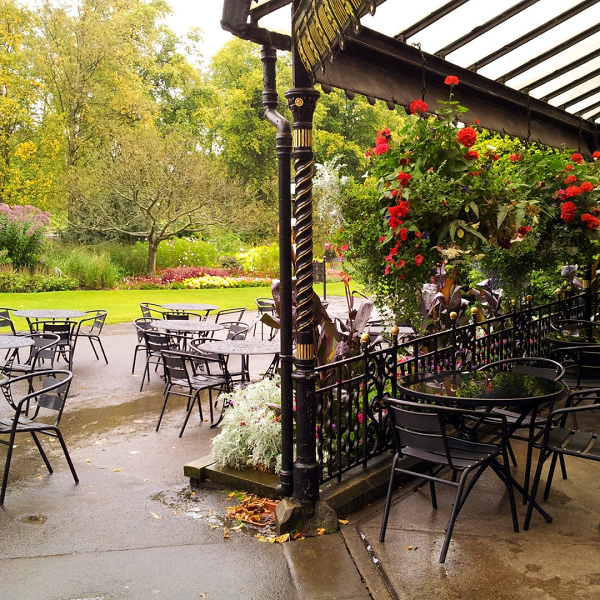Start Your Hemet Business on a Budget: Big Ideas, Small Costs at Hemet Valley Mall
Start Your Hemet Business on a Budget
If you’ve been dreaming of starting your own business or moving your in-home operation to a brick-and-mortar location, but it feels like an expensive, unattainable goal—don’t give up just yet.
It may sound too good to be true, but there are affordable options waiting for you right here at Hemet Valley Mall. You don’t need a massive budget to get started, but you do need to put in a little time and effort to do the research.
And here’s the best part—you still have time to get set up before the 2024 holiday shopping rush! Whether it’s a flexible cart, kiosk, or storefront partnership, there are ways to get your business in front of holiday shoppers without breaking the bank. But you need to act now!
Do the research, take that first step, and explore these opportunities—getting your business ready in time for the busiest shopping season of the year is more possible than you think.
This is Part 1 of our 6-part series on Start Your Own Hemet Business on a Budget. Read Post 2 Here!

About Hemet Valley Mall
A Mall in Need of Revival
As most locals know, Hemet Valley Mall isn’t exactly a bustling hub these days. It’s more like a ghost town, with dark, empty spaces where there once was a thriving indoor shopping experience.
But this doesn’t have to be the mall’s future. By renting space, you’re not only opening up opportunities for your business, but you’re also playing a key role in revitalizing the mall and the community as a whole.
Your Role in Community Revitalization
New businesses breathe life into the mall, attracting locals and even outsiders who drive in to visit exclusive shops and cafes they can’t find anywhere else. As more businesses open, foot traffic increases, and the economic value grows—not just for the mall, but for the entire Hemet community.
Your business could be the spark that helps bring back the energy and excitement the mall once had, creating a destination that people want to visit.
Contact the leasing specialist today to explore how your business can be part of this exciting transformation.
- Address: 2200 W. Florida Avenue, Hemet, CA 92545
- Phone: (951) 652-7771
- Website: thehemetvalleymall.com
- Email: cholland@mcstraussco.com
3 Affordable Ways to Become a Hemet Valley Mall Tenant
Hemet Valley Mall presents a range of opportunities for local entrepreneurs looking to launch or expand their businesses in a cost-effective way. Whether you’re transitioning from an in-home operation or starting fresh, these affordable options will help you establish a physical presence and tap into the mall’s existing foot traffic.
Let’s explore three ways you can become a Hemet Valley Mall tenant while keeping your costs low.
Option 1. Cart: The Mobile Storefront You Own
A cart is an excellent option if you want flexibility. Acting as a mobile storefront, you own the cart, meaning you can take it with you when you leave the mall or even sell it to another business owner when you’re ready to upgrade.
Carts are generally located in high-traffic areas, providing immediate visibility without the high overhead of a full store lease.
Pros
- Low upfront costs: Starting with a cart is much cheaper than a full store, making it an affordable entry point.
- Ownership: You own the cart, giving you full control over how you use it, where you take it, or whether you sell it later.
- Flexibility: Since you own the cart, you have the freedom to move it or take it with you when you leave the mall.
- High visibility: Carts are usually placed in high-traffic areas of the mall, increasing exposure to potential customers.
- Test your products: A cart allows you to test your offerings in a real-world setting without over-committing. You can gauge which products sell best before scaling up.
Cons
- Limited space: A cart provides much less room for product displays and storage compared to a kiosk or storefront.
- Limited branding: With a smaller footprint, it can be harder to create an immersive brand experience.
- Mobility constraints: Even though you own the cart, your space within the mall may be limited to designated areas, restricting mobility.
- No indoor space: You’ll be managing your cart from outside the actual storefronts, which could limit customer interaction during less busy times.
Note: While carts are an excellent low-cost option, if you’re looking for more space and a more permanent structure, a kiosk might be the next step up.
Option 2. Kiosk: The Stable Storefront Inside the Mall
A kiosk provides more space and structure than a cart, making it ideal for businesses ready to showcase a wider range of products. However, unlike a cart, you do not own the kiosk—it is a stable setup provided by the mall.
You’ll have space inside for displays and staff, but if you decide to move or leave, you can’t take the kiosk with you.
Pros
- More space: A kiosk allows you to display more products and create a more robust shopping experience for customers.
- Professional setup: The mall provides a well-designed structure, so you don’t need to worry about the logistics of setting up your space.
- Increased foot traffic: Kiosks are typically placed in high-traffic areas, giving you consistent exposure to potential customers.
- Space for staff: With room inside for employees, you can offer more hands-on customer service, helping you engage with more shoppers.
- Higher visibility than a cart: The larger setup makes your business more noticeable, giving your brand a stronger presence in the mall.
Cons
- No ownership: Unlike a cart, you do not own the kiosk. You can’t take it with you if you decide to leave or expand to another location.
- Higher costs: Renting a kiosk is more expensive than a cart, which can be challenging for businesses on a tight budget.
- Less flexibility: Since you don’t own the kiosk, you’re limited in terms of customization and mobility.
- Commitment: Depending on the lease terms, you may be locked into a longer rental agreement than with a cart, making it harder to pivot quickly if the business needs change.
- Limited product storage: While you have more display space than a cart, kiosks still offer less storage compared to a full storefront.
Note: If you need more than a kiosk and are ready to collaborate with another business, consider a storefront partnership where synergy can work in your favor.
Option 3. Storefront Partnership: Synergy and Experiences
If you’re ready for more space but want to avoid the full financial burden, a storefront partnership is a great option. By teaming up with a non-competing but complementary business, you can share costs while offering customers a more complete shopping experience.
Synergy is key here—by offering products or services that work well together, both businesses benefit from each other’s customer base and marketing efforts, creating a win-win situation.
For example, if you run a clothing boutique, partnering with a business that sells skincare products or accessories can enhance the customer experience by providing a one-stop shop. This kind of partnership attracts more customers and keeps them in your store longer, increasing the chances of making sales.
Pros
- Reduced costs: Split rent, utilities, and staffing expenses with your partner, making a larger storefront more affordable for both businesses.
- Cross-promotion: By sharing a space, you can promote each other’s products or services, expanding your marketing reach and attracting more customers.
- Enhanced customer experience: Shoppers enjoy a more comprehensive experience when they can purchase related products or services in one visit.
- Synergy: When your products or services complement each other, it creates a harmonious environment that benefits both businesses and enhances the customer journey.
- More space: Sharing a storefront gives you access to more display and storage space than a cart or kiosk, allowing you to showcase a broader range of products.
Cons
- Finding the right partner: It can be challenging to find a business that aligns well with yours in terms of product compatibility, brand values, and target audience.
- Shared decision-making: You and your partner will need to agree on shared expenses, marketing strategies, store layout, and customer experience, which can be complicated if you have differing visions.
- Dividing profits: While you’re not sharing profits directly, there may be disputes about who contributes more to shared marketing efforts or customer acquisition, especially if one business seems to benefit more.
- Commitment to synergy: If the synergy between businesses isn’t strong, the partnership can feel forced, and customers might not see the value of visiting your shared store.
- Increased complexity: A partnership adds complexity to managing day-to-day operations, marketing, and long-term planning, as you’ll need to coordinate closely with your partner.
4 Steps to Take Now
You’re ready to take the first steps toward establishing your business in Hemet Valley Mall, but where do you begin? Whether you choose a cart, kiosk, or storefront partnership, getting the right information upfront is crucial to making a smart decision.
Here are four steps you should take now to ensure you’re setting up for success.
Step 1: Contact Hemet Valley Mall Management
- Action: Reach out to the mall’s management office and inquire about available opportunities for carts, kiosks, and storefront partnerships.
- What to Ask: Be sure to ask about the specifics: pricing, leasing terms (short-term and long-term), current availability, and any promotions or incentives they may have for new businesses. Don’t hesitate to ask about flexibility in leasing terms, especially if you’re unsure about a long-term commitment.
- Next Steps: Take note of the costs and lease lengths associated with each option (cart, kiosk, or storefront) so you can compare them later. If possible, schedule a visit with mall management to view the available spaces in person.
Step 2: Visit the Mall
- Action: Make several trips to Hemet Valley Mall at different times of the day and week to observe foot traffic. Note which areas are busiest and where shoppers tend to gather.
- What to Look For: Identify high-traffic areas near entrances, anchor stores (like larger retail chains), food courts, or entertainment venues. Pay attention to where kiosks and carts are located and whether they’re attracting consistent foot traffic. Additionally, look for open spaces or available storefronts that might suit a partnership arrangement.
- Next Steps: Take photos and make a map of the areas that look promising, noting how different businesses are positioned and how much visibility they have. This will help you when deciding where to place your cart, kiosk, or shared store.
Step 3: Research Cart vs. Kiosk
- Action: Understand the key differences between owning a cart and leasing a kiosk so you can decide which option is best suited for your business goals and budget.
- What to Consider:
- Cart: Focus on flexibility, ownership, and lower costs. Owning a cart allows you to take it with you or sell it when you expand. However, carts have limited space for products and branding.
- Kiosk: While a kiosk offers more space and a stable setup, it comes with higher rental costs and lacks the ownership benefits of a cart. The professional appearance and greater display area could be ideal if your business has more inventory or requires space for staff.
- Next Steps: Weigh the pros and cons based on your business model. Are you testing new products and need flexibility, or do you have enough products and staff to justify a kiosk with higher costs?
Step 4: Look for a Partnership
- Action: If you’re leaning toward a storefront partnership, begin researching local businesses that offer complementary products or services. Reach out to owners who may be interested in sharing a space with you.
- How to Approach: Consider businesses that complement yours in terms of products, services, and target market. For example, if you sell fashion items, you might partner with a business that sells accessories, shoes, or skincare. Reach out with a clear proposal, focusing on how synergy will benefit both businesses through shared costs, cross-promotion, and enhancing the customer experience.
- Next Steps: Prepare a brief business plan outlining how you envision the partnership working. Include details like how rent and utilities would be split, who would be responsible for what, and how marketing efforts could be coordinated. This helps make your offer more appealing and shows you’ve thought through the details.
Up Next: Post 2: Hidden Gems of Ramona Bowl Amphitheatre
Read the Full Series:
Post 1: Big Ideas, Small Costs at Hemet Valley Mall
Post 2: Hidden Gems of Ramona Bowl Amphitheatre
Post 3: Unlock the Secrets of Hemet with Historical and Science Tours
Post 4: Profit from Adventure at Diamond Valley Lake
Post 5: Creative Coffee, Drinks, and Entertainment ‘At the Park’
Post 6: Think Your Vacant Land Is Useless? Here’s Why That’s Just Dumb!
Taking Action for Holiday Success
By taking these steps now, you can move forward with confidence, whether you choose a cart, kiosk, or partnership. Start by gathering the information you need, visiting the mall, and weighing the options that align best with your business goals and budget. If you’re ready for more space and collaboration, begin discussions with potential partners to create a mutually beneficial arrangement.










